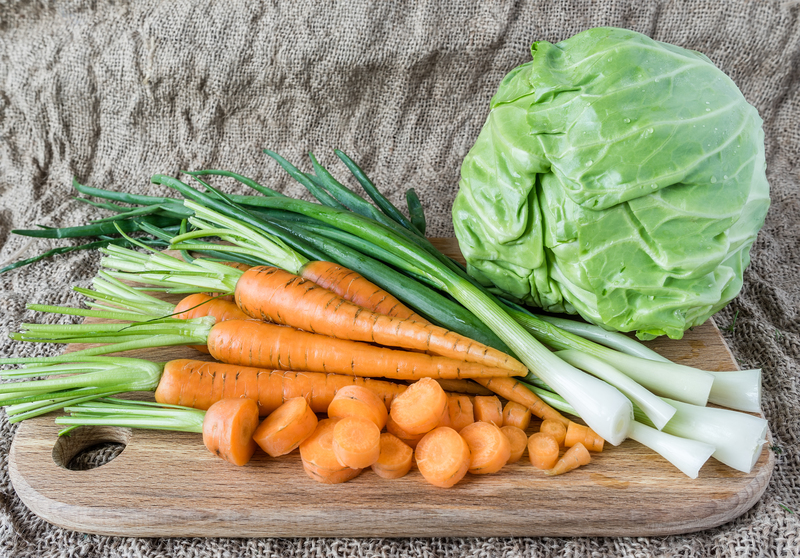Winter Gardening Tips: Safeguarding Plants from Cold
Posted on 03/06/2025
Winter Gardening Tips: Safeguarding Plants from Cold
Winter brings a challenge for gardeners: how can you protect your beloved plants from cold weather? Understanding the best approaches to winter gardening will help your garden not only survive but also thrive during frosty months. In this comprehensive article, we'll delve into practical winter gardening tips and strategic ways to safeguard plants from freezing temperatures, snow, and frost. Whether you're a seasoned gardener or just starting out, you'll find actionable advice to keep your plants safe, healthy, and ready to bloom come spring.
Why Winter Protection Matters for Your Garden
When winter arrives, low temperatures, chilling winds, and snowfall can spell trouble for your plants. Rather than letting your garden succumb to the winter blues, proactive winter plant protection can guarantee lush blooms and healthy foliage when warmer days return. Plants that are shielded from winter stressors tend to:
- Experience less frost damage
- Retain stronger root systems
- Have a quicker comeback in spring
- Show increased resistance to pests and disease
Let's embrace effective winter gardening methods and learn how to guard your plants during the coldest months.

Understanding the Risks: What Happens to Plants in Cold Weather?
Before planning your winter gardening strategy, it's important to know how cold weather affects plants. Freezing temperatures can cause water inside plant cells to expand and rupture cell walls, leading to visible leaf damage and, in severe cases, plant death. Additionally, winter winds can dry out foliage and soil, while rapid freeze-thaw cycles may heave roots out of the ground.
Knowing the specific hardiness zones for your region--which indicate how cold your area gets--will help you make the best decisions about which plants need extra attention during winter.
Top Winter Gardening Tips to Safeguard Plants
1. Choose Cold-Hardy Plants
The most straightforward way to ease winter gardening woes is plant selection. Opt for perennials, trees, and shrubs listed as hardy in your USDA zone--or even one zone colder for extra insurance. Cold-hardy plants are naturally better suited to withstand winter stress and bounce back in spring.
2. Mulch Generously
Applying a thick layer (2-4 inches) of organic mulch such as straw, wood chips, or shredded leaves serves several purposes:
- Regulates soil temperature, preventing quick freeze-thaw cycles
- Retains soil moisture during dry, windy spells
- Offers a buffer zone against harsh cold
- Suppresses winter weeds
Refresh or top up mulch in late fall for best results.
3. Water Before Frost Hits
One commonly overlooked winter gardening tip is to water your plants deeply before the ground freezes. Moist soil retains heat better than dry soil, giving roots an insulating advantage against cold snaps. However, avoid waterlogging, as wet soil can lead to rot.
4. Protect with Cloches, Row Covers, and Cold Frames
Physical barriers are vital for safeguarding tender plants and winter vegetables. Consider:
- Cloches: Bell-shaped covers placed over individual plants add warmth and shield from wind.
- Row covers: Lightweight fabric (like garden fleece) draped directly over beds to buffer against frost.
- Cold frames: Mini-greenhouses that use sunlight to trap heat, ideal for greens and early seedlings.
These tools are reusable and can significantly extend your growing season.
5. Group Containers and Raise Them Off the Ground
If you garden in pots, cluster them together in a sheltered spot, close to a south-facing wall for maximum warmth. Raising containers on pot feet or bricks allows for better drainage and helps prevent cold damage to the roots, which are more vulnerable in containers compared to in-ground plants.
6. Prune with Caution
While many gardening guides suggest winter pruning, it's best to wait until late winter or early spring for most species. Pruning too early can stimulate tender new growth that's susceptible to frost. However, be sure to remove any damaged or diseased branches to prevent problems over winter.
7. Provide Windbreaks
Strong winter winds can dry out and damage even hardy plants. Use burlap screens, snow fencing, or evergreen boughs to shield sensitive specimens, especially young evergreens or recently planted shrubs.
8. Feeding and Fertilizing: Less is More
Plants metabolize more slowly in winter. Stop fertilizing by late summer or early fall--excess nutrients can promote late-season, frost-tender growth. Instead, focus on soil enrichment in spring and summer.
How to Protect Delicate and Exotic Plants from Cold
Special Tactics for Sensitive Plants
Some garden favorites--tropical plants, tender perennials, and young saplings--require extra protection to survive snow and freezing temperatures:
- Wrap trunks and stems of young trees with tree wrap or burlap to prevent sunscald and cracking.
- Move potted tropicals and houseplants indoors to a sunny window or heated greenhouse.
- For in-ground, non-hardy plants, cover with heavy mulch or mound soil over crowns for insulation.
- Lift and store bulbs (like dahlias or gladiolus) in a cool, dry, frost-free location.
Ensure your plant tags are accurate: knowing a plant's exact species will let you research specific winter protection strategies for optimal survival.
Homemade Garden Protection Ideas
Don't have commercial cloches or cold frames? Recycle household items:
- Use plastic milk jugs (bottom cut off) as instant plant domes
- Old blankets, sheets, or towels can act as emergency covers during deep freezes
- Sturdy cardboard boxes provide overnight frost protection for small beds and seedlings
Just remember to remove covers during the day so plants get adequate light and air.
Maximize the Benefits of Snow
Snow isn't always the enemy; in fact, a layer of snow acts as a natural insulator, keeping soil temperatures more stable and protecting roots from harsh wind. Avoid shoveling snow *directly* onto delicate shrubs and perennials, as excessive weight can cause breakage. If possible, gently brush off heavy snow from branches after storms.
Evergreens Need Extra Love
While evergreen trees and shrubs look hardy, always green in the bleakest months, they're still at risk from desiccation and sunscald. Key winter gardening tips for evergreens include:
- Water well before the ground freezes
- Mulch generously
- Shield from wind with screens or burlap wraps
If your location experiences repeated freeze-thaw cycles, take extra care to protect evergreens exposed to southern or southwestern sunlight, which can damage bark and needles.
Indoor Winter Gardening: An Alternative Approach
Try an Indoor Herb Garden
If outdoor conditions are simply too harsh, why not bring the garden inside? Many herbs like basil, parsley, and chives thrive on sunny kitchen windowsills, giving you fresh flavors even in the heart of winter.
- Use well-draining soil and pots with drainage holes
- Place close to a south or west-facing window for optimal light
- Rotate pots regularly for even growth
Utilize Grow Lights
Investing in LED grow lights allows you to cultivate greens, microgreens, and even dwarf tomato varieties indoors. This is a perfect way to enjoy fresh produce and keep your green thumb active year-round.
Common Winter Gardening Mistakes to Avoid
Skip these pitfalls to keep your garden lush:
- Leaving containers or delicate plants exposed during surprise frosts
- Pruning too early (leading to vulnerable new growth)
- Overwatering or watering at the wrong time--always water earlier in the day to prevent freezing around roots overnight
- Forgetting to remove coverings during warm spells, leading to trapped moisture and rot
By being proactive and observant, you can avoid these common mistakes and boost your winter gardening success.

Frequently Asked Questions about Winter Gardening
-
When should I begin winter preparations for my garden?
Start preparing your garden for winter in late fall, before hard frosts arrive. This ensures all measures are in place for coming cold snaps. -
Is it necessary to cover all plants during winter?
Only the most vulnerable--tender perennials, young saplings, and exotics--truly require covering. Hardy natives and established perennials generally survive unaided with proper mulching. -
Can I plant anything during winter?
Some hardy vegetables, like garlic and certain onions, can be planted in late fall for spring harvest. Otherwise, stick to indoor gardening for new growth in winter. -
How do I know if my plants are winter-hardy?
Check plant tags or consult gardening databases by searching your plant's name along with your USDA zone.
Conclusion: Thriving Through the Cold
Winter need not spell the end for your garden. By following the best winter gardening tips and mastering techniques to safeguard your plants from cold weather, you ensure a lush, vibrant landscape year after year. Remember that each plant may have unique needs--pay attention, experiment, and don't be afraid to try new protective methods. With the right preparation, your garden can become a beacon of life and color, no matter how cold it gets outside.
Stay warm, and happy winter gardening!



